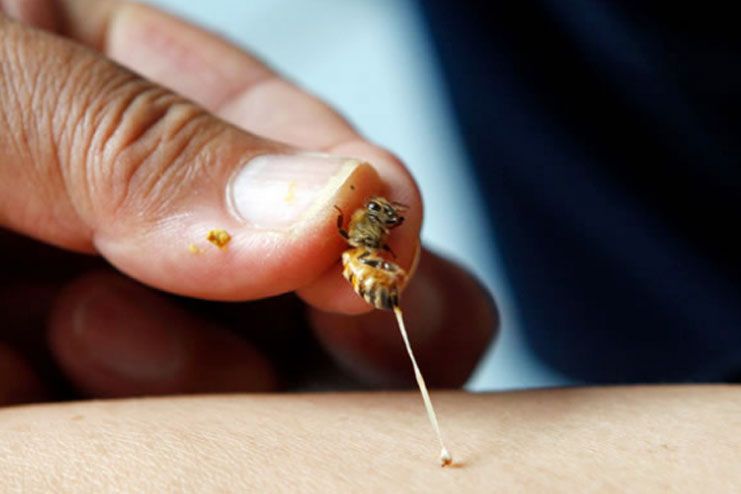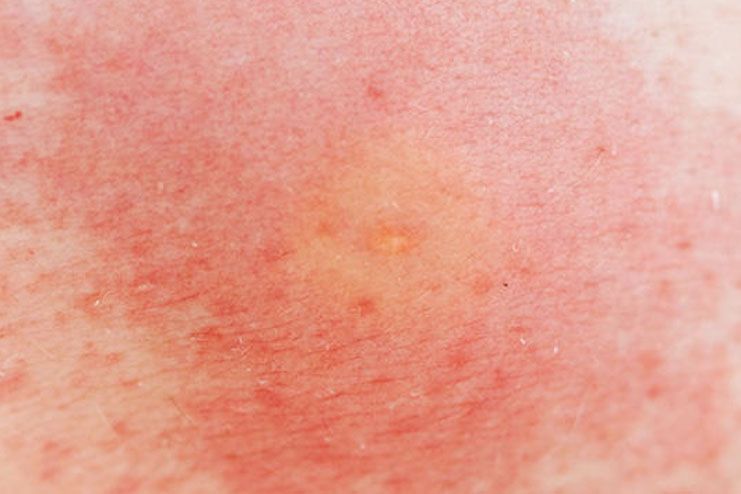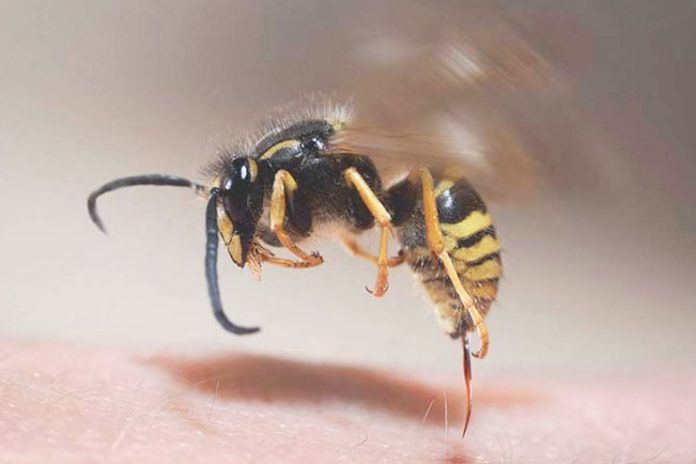Affiliate Disclaimer
Some links in this article are affiliate links. We may earn a small commission if you make a purchase through these links, at no extra cost to you. We only recommend products we find useful to our readersWasp stings are a common health concern, especially during warmer months and when individuals spend extended periods outdoors. Although wasp stings can be painful and may lead to various issues, most people recover without complications. Infections caused by wasp stings can be treated with medication or effective home remedies.
In this article, we aim to provide comprehensive information about wasp stings, including their primary symptoms. Continue reading to learn about treatment options and some effective home remedies to address wasp stings.
What is a Wasp Sting?
Like bees and hornets, wasps carry a stinger, which is mostly used for self-defense. This stinger is filled with venom, which is transmitted into the human blood during a sting. Unlike bees, wasps can sting more than once during the attack without causing any damage to the stinger.
An empty wasp stinger without venom can also cause significant pain and irritation. After a sting, various symptoms can start to show.
Symptoms of a Wasp Sting

Most people experience only minor symptoms after a wasp sting, except those who are allergic Wasp stings cause initial symptoms such as sharp pain and a burning sensation at the sting site, along with itching, redness, and swelling in the area.
A small welt may develop, often accompanied by a white mark where the stinger entered the skin. For non-allergic individuals, the pain and swelling typically subside after several hours and can usually be treated at home, referred to as Normal Local Reactions.
In allergic individuals, symptoms classified as large local reactions can occur, which may include intense pain, increased redness, and swelling that worsen two to three days after the sting, as well as nausea and vomiting.
Severe wasp stings can lead to anaphylaxis, a serious allergic reaction that requires immediate medical attention. Major symptoms of anaphylaxis include:
- Severe swelling of the throat, lips, and face
- Dizziness
- Difficulty breathing
- Lightheadedness
- Sudden drop in blood pressure
- Diarrhea
- Vomiting or nausea
- Stomach cramps
- Increased or weak pulse
- Itchiness in various parts of the body
How Long Does a Wasp Sting Last?
Large local reaction symptoms should typically subside within a week. However, it is important to consult your doctor if these symptoms persist for 2-3 weeks. Your doctor may prescribe medication to alleviate the sting’s intensity, and in some cases, antihistamines may be recommended to reduce discomfort.
It’s important to note that symptoms can vary with different sting incidents. Therefore, taking preventive measures against wasp stings is essential to minimize future complications and health issues.
How to Treat Wasp Stings?

Applying hydrocortisone and calamine lotions to the affected area can help reduce itching and skin irritation. Additionally, taking ibuprofen may alleviate pain caused by wasp stings.
It is crucial to take any prescribed medications in the recommended dosage, as failing to do so can lead to side effects such as drowsiness and stomach irritation.
Many doctors recommend getting a tetanus shot within 2-4 days after a wasp sting to prevent complications from infection. This is particularly important if you have not received a booster dose in the last ten years.
In addition to these treatments, various home remedies can also be effective in easing the discomfort of wasp stings. Here are some of the most prominent and effective home remedies.
Home Remedies for Wasp Stings
1. Baking soda
Baking soda’s alkaline properties help neutralize the venom and provide quick relief from pain, itching, and swelling.
- Make a paste by mixing one teaspoon of baking soda in some water
- Apply this paste on the site of the sting for 5-10 minutes
- With lukewarm water, wash the area properly
- You can repeat this treatment if discomfort persists
2. Ice
Applying an ice compress to the affected area can also help provide relief from the symptoms of a wasp sting. The cold temperature also helps reduce the swelling and numb the pain.
- Make an ice pack by tying up some ice in a thin washcloth
- Now hold this pack on the area affected for 10-15 minutes
- Use this compress until the pain and swelling goes away
- Avoid putting ice directly on the skin as it may cause frostbite
3. Apple Cider Vinegar
Apple cider vinegar neutralizes the acid in the venom, reducing itching, swelling, and pain.
- Soak a cotton ball in raw unfiltered apple cider vinegar
- Hold the soaked cotton ball on the affected area for 5-10 minutes.
- Repeat the process if needed
- You may also use white vinegar if apple cider vinegar is not available
Conclusion
Wasp stings can cause discomfort, pain, and swelling, but you can manage them effectively at home with the right approach. In most cases, the symptoms are mild and will subside within a few hours or days.
To find relief, you can use over-the-counter treatments such as hydrocortisone lotion or calamine. Additionally, home remedies like baking soda paste, ice compresses, or apple cider vinegar can be effective.
However, it’s crucial to watch for signs of severe allergic reactions, such as anaphylaxis, which require immediate medical attention. Understanding the symptoms and treatments for wasp stings will help you handle them effectively and minimize the risk of complications.
-
Oct 2017Written by Prajakt
-
Dec 2024Edited by Lakshmi Gayatri
In this Article


















